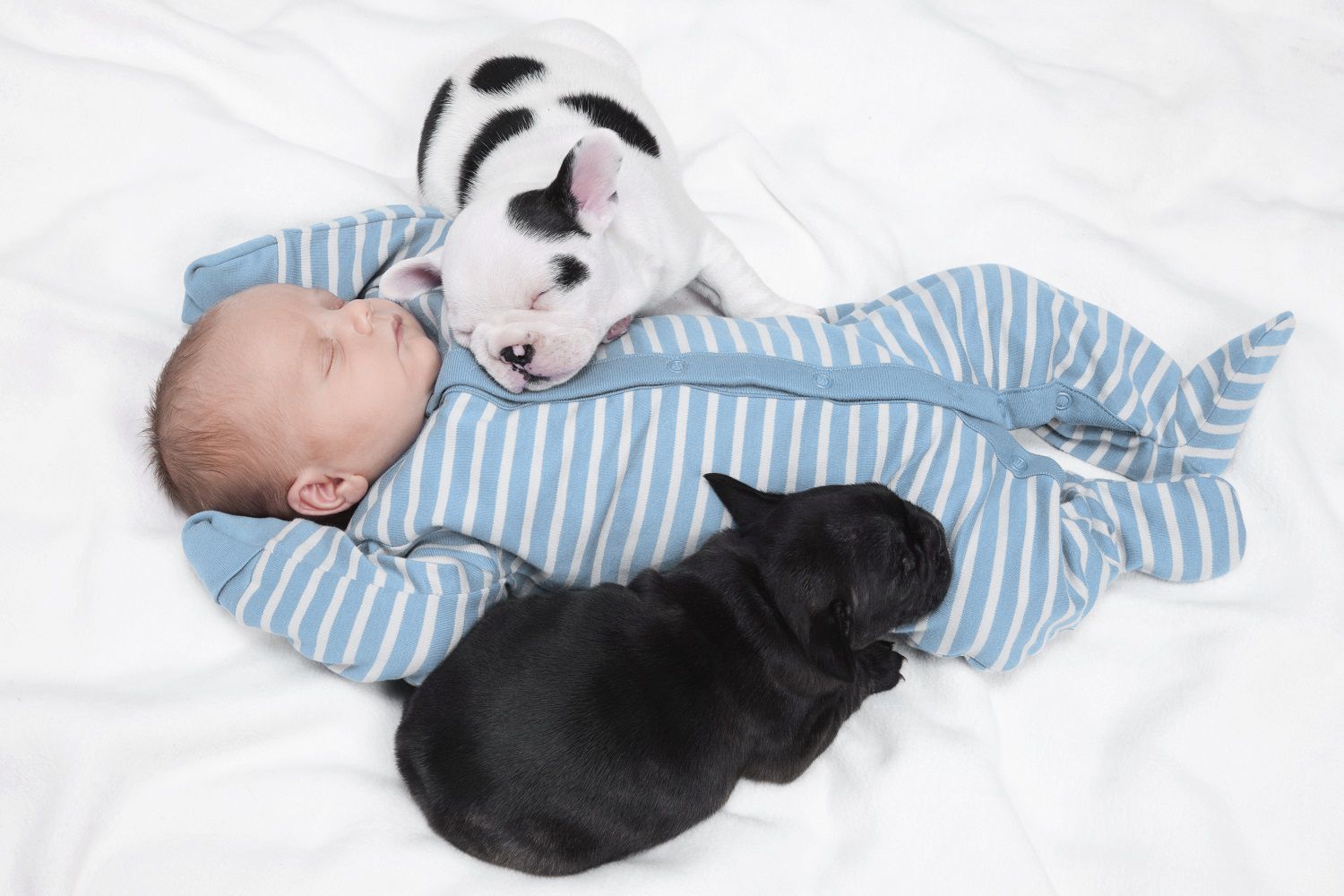Guidelines for Acclimating Infants to Household Pets
When introducing infants to household pets, create a safe space and set clear boundaries for a smooth shift. Gradually expose your baby to the sights and sounds of pets, promoting positive associations. Use positive reinforcement and closely monitor interactions between your baby and pets. Pay attention to behavioral cues and intervene if needed. Reward good behaviors and supervise all interactions for safety. This approach will help build a strong bond between your little one and furry friends while ensuring a secure environment. By following these guidelines, you can foster a loving and respectful relationship between your infant and pets.
Key Takeaways
- Gradually introduce pets to the infant’s scent to familiarize them.
- Use positive reinforcement for calm behavior around the baby.
- Supervise interactions closely to ensure safety for both child and pet.
- Establish clear boundaries and consistent routines for pets.
- Monitor both pet and infant cues during interactions for a positive experience.
Setting the Stage for Success

To successfully acclimate your infant to household pets, begin by creating a safe and positive environment for both your baby and the animals. Gradual exposure is key when introducing pets to your little one. Start by allowing your pet to become familiar with the baby’s scent by bringing home a blanket or clothing item the infant has used. This helps your pet adjust to the new family member before direct contact.
Positive reinforcement is essential during this process. Reward your pet for calm and gentle behavior around the baby. Consistent routines can also aid in the acclimation process. By maintaining a predictable schedule for both your infant and pets, you create a stable environment that reduces stress for everyone involved.
Gentle introductions should be supervised closely. Always prioritize safety by never leaving your baby and pet unattended together. With patience and understanding, your infant and household pets can form a harmonious bond that will last a lifetime.
Supervision and Boundaries

Supervise adequately and establish clear boundaries when introducing your infant to household pets for a smooth acclimation process. Setting boundaries is vital to guarantee both your child’s and pet’s safety. Always supervise interactions between your infant and the pet, even the most well-trained animals can react unexpectedly.
Make sure your pet is trained and responds well to basic commands, reinforcing positive behavior. This not only helps in ensuring safety but also fosters a positive relationship between your infant and the pet.
When setting boundaries, create designated spaces for the pet where the infant can’t access. This provides a safe area for the pet to retreat to if needed. It’s important to teach your child to respect the pet’s boundaries and space. Encourage gentle interactions and discourage behaviors like pulling tails or ears.
Introducing Sights and Sounds

As you introduce your infant to household pets, gradually expose them to different sights and sounds in a calm and controlled manner to help them acclimate comfortably. Pet introductions should be handled with care, ensuring that your little one feels safe and secure during the process. Begin by allowing your infant to observe the pets from a distance, letting them become familiar with their presence. Slowly introduce closer interactions while closely monitoring their reactions to the sights and sounds of the pets.
Sensory exposure plays an important role in helping your infant adjust to the new additions to the household. Start by incorporating gentle and positive experiences, such as playing soothing music while the pets are nearby or showing your infant colorful pictures of animals. These gradual introductions will help your child become accustomed to the sights and sounds associated with pets, fostering a sense of comfort and security in their presence.
Building Positive Associations

Creating positive associations between your infant and household pets is essential in fostering a harmonious and safe environment for both. By using positive reinforcement and socialization techniques, you can help your little one and furry friends build a strong bond that will last a lifetime.
Essential reinforcement involves rewarding desirable behaviors to encourage their repetition. When your infant interacts positively with the pets, such as gently petting them or playing calmly, praise both the baby and the pet. This positive feedback helps your infant associate good behavior with a happy response, reinforcing the idea that being around pets is enjoyable.
Socialization techniques are also vital in building positive associations. Encourage gentle interactions between your infant and pets, always under close supervision. Allow your baby to observe the pets from a safe distance initially, gradually moving closer as they become more comfortable.
Through these gradual introductions, your infant will learn to feel at ease around the pets, leading to a positive and enriching relationship for both parties.
Monitoring Interactions

To guarantee the safety and well-being of both your infant and household pets, it’s important to closely monitor their interactions from the beginning. Paying attention to behavioral cues is critical. Watch how your pet responds to the presence of the infant and vice versa.
Teach your infant playtime etiquette, such as being gentle and respectful towards the pet. Understanding body language is key. If your pet seems uncomfortable, anxious, or aggressive, it’s important to intervene immediately.
Similarly, educate yourself on the signs that indicate your infant isn’t enjoying the interaction. Encouraging gentle touch from both parties is crucial. Show your infant how to pet the animal softly and supervise these interactions closely.
Frequently Asked Questions
How Can I Teach My Pet to Be Gentle With My Baby?
To teach your pet to be gentle with your baby, focus on pet training and baby safety. Encourage gentle interactions and supervise playtime closely. Consistency and positive reinforcement will help create a safe and harmonious environment for both your pet and baby.
Is It Okay for My Infant to Share a Pet’s Bed?
Sharing a pet’s bed with an infant can pose risks like suffocation or exposure to pet dander. Consider alternative sleep arrangements to guarantee safety and hygiene. Place your baby in a separate crib to promote better sleep habits for both.
What Do I Do if My Pet Shows Aggression Towards My Baby?
If your pet shows aggression towards your baby, prioritize baby safety. Seek pet training to address the behavior. Introducing pets to infants requires careful supervision and understanding of infant behavior. Stay vigilant and consult a professional if needed.
Can I Leave My Infant Alone With Our Pet?
You should never leave your infant alone with your pet. Always make sure pet supervision is in place. It’s important to take safety precautions seriously. Prioritize your baby’s well-being by maintaining a watchful eye at all times.
Should I Be Concerned if My Infant Is Allergic to Our Pet?
If your infant shows signs of pet allergies like sneezing or skin rashes, you should manage pet allergy symptoms by consulting a pediatrician. Keep your home clean, limit pet exposure, and consider allergy testing for accurate diagnosis and treatment.
Conclusion
To sum up, acclimating infants to household pets requires patience, supervision, and positive reinforcement.
By setting the stage for success, establishing boundaries, and gradually introducing sights and sounds, you can help create a safe and harmonious environment for both your child and your furry friends.
Remember to monitor interactions closely and always prioritize the well-being of both your baby and your pets.
With time and consistency, you can foster a loving and mutually beneficial relationship between your little one and your animal companions.

Chad Adan Kace, a young dad from Vermont, shares his parenting journey with a touch of humor and lots of love. Father to a lively baby, he explores the joys and challenges of fatherhood through his stories.







